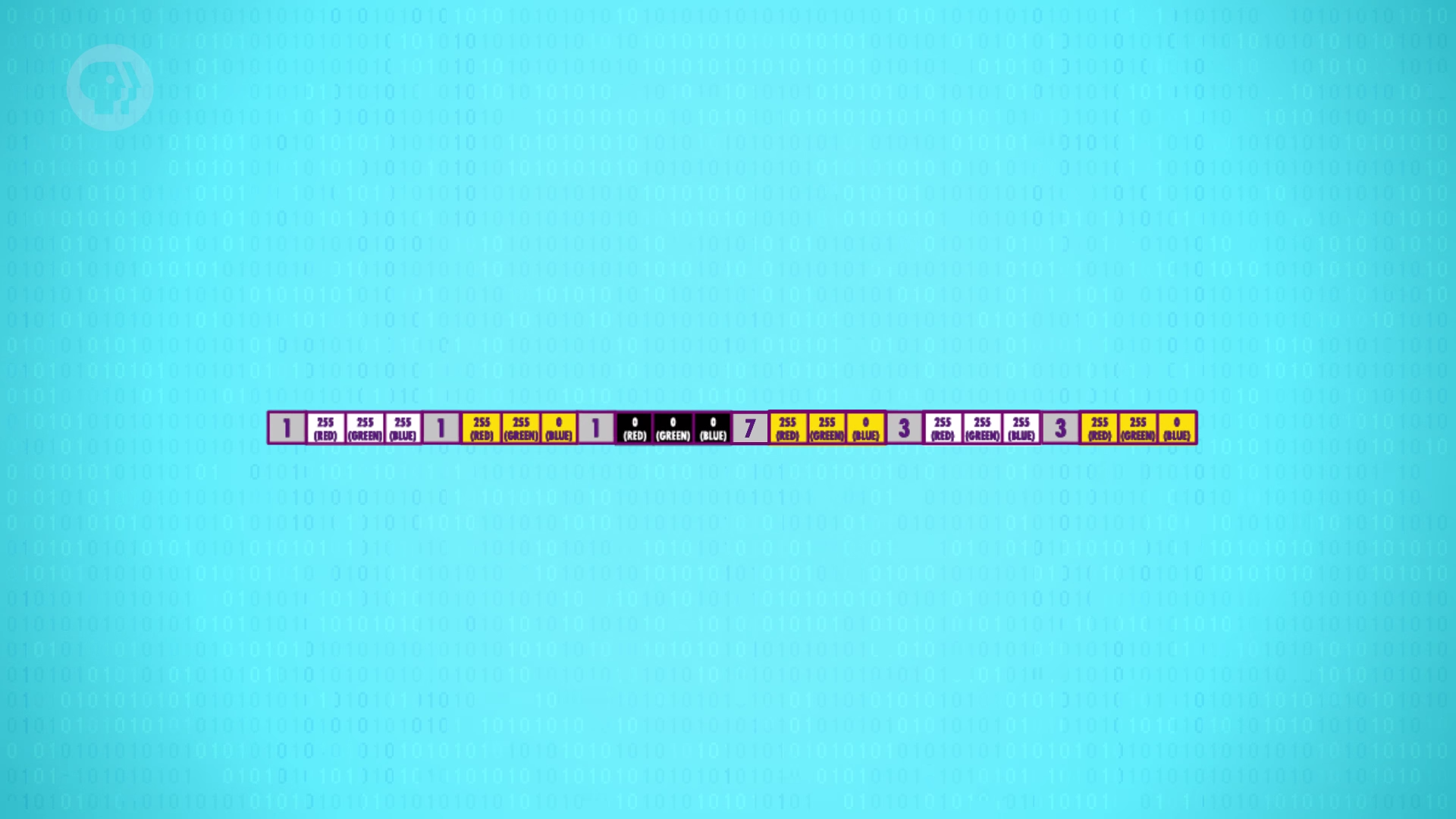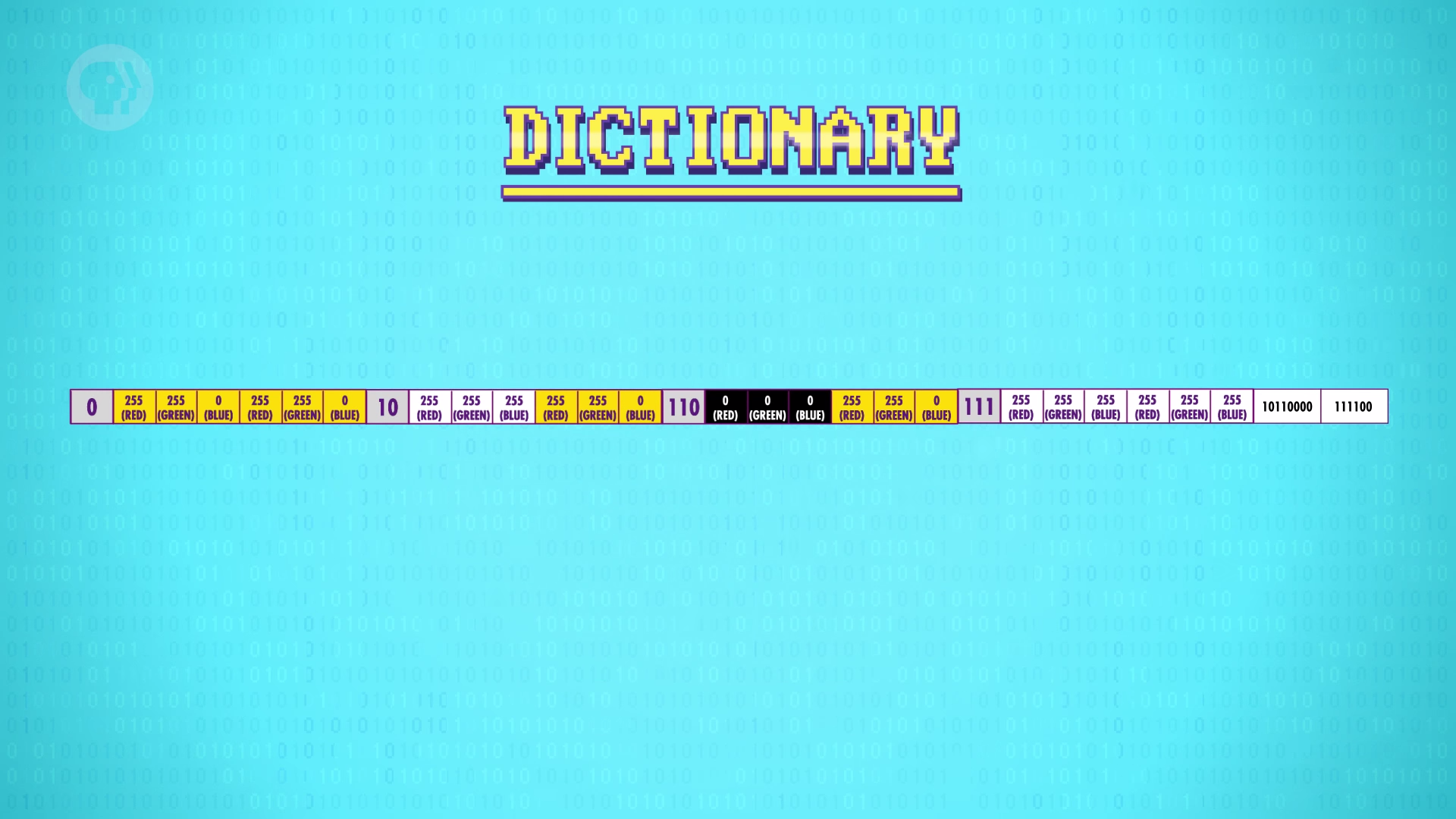Loseless compression
One way to compress data is to reduce repeated or redundant information.
Run-Length Encoding
Count the repeating blocks of data.

Dictionary coder
Dictionary that stores the mapping from code to data is in the front of the file. The actual data is encoded using Huffman Tree.

Both methods are loseless compression - The decompressed data is identical to the original before compression, bit for bit.
These two approaches are often combined and underlie almost all loseless compressed file formats like GIF, PNG, and ZIP files.
Lossy compression
There are other types of files where we can get away with little changes, by removing unnecessary or less important information, especially information that human perception is not good at detecting.
Audio
Lossy audio compressors encode different frequency bands at different precisions.
- For example, when recording a music, we can discard data in the ultrasonic fequency range, which humans can't hear.
- Preserve frequencies in the vocal range, which humans are sensitive to, as much as possible.
We encounter this type of audio compression all the time, a reason why we sound different on a cellphone.
- The audio data is being compressed, allowing more people to make calls at once.
- As the signal quality or bandwidth get worse, compression algorithms remove more data, further reducing precision, which is why Skype calls sometimes sound like robots talking.
Uncompressed audio format - WAV, FLAC
Compressed - MP3 (ten times smaller)
This idea of discarding or reducing precision in a manner that aligns with human perception is called perceptual coding, and it relies on models of human perception which comes from a field of study called Psychophysics.
Image
JPEG - most famous lossy compressed image format
Human perception is good at detecting sharp contrasts like the edges of objects, but not good with subtle color variations.
JPEG takes advantage of this by breaking images up into blocks of 8x8 pixels, then throwing away a lot of the high-frequency spatial data.
Video
Temporal redundancy, inter-frame similarity - repeating pixels in a series of images, like a static background.
Video formats just copies the patches of repeating pixels to the next frame, instead of re-transmiting every pixels in a frame of a video.
When there are small differences, most video formats send data that represents just the difference between patches.
Fanciest video compression formats find patches that are similar between frames, and not only copy them forward, with or without differences, but also can apply simple effects to them like a shift or rotation, or lighten or darken a patch between frames.
MPEG-4 videos, a common standard, are often 20 to 200 times smaller than the original, uncompressed file.
If compressed too heavily, the video player will forge ahead, applying the right motions, even if the patch data
Vocabulary
- audiophile - a person who has a great interest in high-fidelity(hi-fi, 고성능 음악 재생 장치) sound reproduction
- Don't judge me - Don't disagree with what I'm doing
- trippy - 몽롱한
Thoughts
압축기술 덕분에 고화질의 영상과 사진을 볼 수 있구나.
